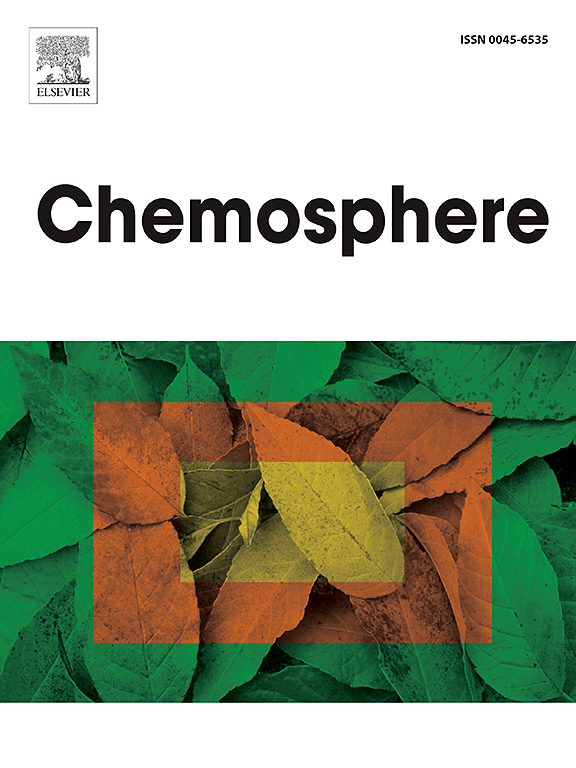饮食来源和个人护理产品对韩国年轻人对羟基苯甲酸酯暴露的影响:一项交叉干预研究
IF 8.1
2区 环境科学与生态学
Q1 ENVIRONMENTAL SCIENCES
引用次数: 0
摘要
对羟基苯甲酸酯包括甲基苯甲酸酯(MeP)、乙基苯甲酸酯(EtP)和丙基苯甲酸酯(PrP),它们被广泛用作食品、化妆品、个人护理产品(CPCPs)和药物中的抗菌防腐剂。然而,评估暴露源对羟基苯甲酸酯暴露贡献的研究是有限的,而且大多数主要集中在cpcp上。本研究进行了交叉干预,以评估食物和cpcp对韩国年轻人对羟基苯甲酸酯暴露的影响。27名大学生参加了为期6天的干预。在整个研究过程中,他们使用了不含防腐剂的cpcp,并在第3-4天吃了“不含对羟基苯甲酸酯酱料的饮食”,然后在第5-6天吃了“含对羟基苯甲酸酯酱料的饮食”。在每个干预点采集尿样,采用HPLC-MS/MS分析9种对羟基苯甲酸酯,包括MeP、EtP和正丙基对羟基苯甲酸酯(nPrP)。干预前,尿中MeP、EtP和nPrP的几何平均浓度分别为6.05、76.9和0.52 ng/mL,约为其他国家报告水平的3至14倍。仅使用cpcp干预后,尿中对羟基苯甲酸酯浓度未见明显变化。然而,在饮食中加入不含对羟基苯甲酸酯的酱汁后,尿EtP水平显著下降了79.7% (95% CI -89.2, - 61.8)。食用含对羟基苯甲酸酯酱料后,尿中EtP和MeP水平显著升高(EtP为2830% (1310-5990);MeP 84.4%(25.7, 170))。这项研究强调了饮食对羟基苯甲酸酯暴露的重大影响,特别是EtP,表明饮食来源起着重要作用。本文章由计算机程序翻译,如有差异,请以英文原文为准。

Effects of dietary sources and personal care products on paraben exposure in young Korean adults: A crossover intervention study
Parabens including methyl-(MeP), ethyl-(EtP), and propyl-(PrP) parabens, are widely used as antimicrobial preservatives in foods, cosmetics, and personal care products (CPCPs), and drugs. However, studies evaluating the contribution of exposure sources to paraben exposure are limited, and most focus primarily on CPCPs. This study conducted a crossover intervention to assess the contributions of foods and CPCPs to paraben exposure among young Korean adults. Twenty-seven college students participated in a 6-day intervention. They used preservative-free CPCPs throughout the study and were served a 'diet with paraben-free sauces' on days 3–4, followed by a 'diet with paraben-containing sauces' on days 5–6. Urine samples collected at each intervention point were analyzed for nine parabens, including MeP, EtP, and normal propyl-paraben (nPrP), using HPLC-MS/MS. Before the intervention, the geometric mean urinary concentrations of MeP, EtP, and nPrP were 6.05, 76.9, and 0.52 ng/mL, respectively–approximately 3 to 14 times higher than levels reported in other countries. No significant changes in urinary paraben concentrations were observed after the CPCPs-only intervention. However, following the diet with paraben-free sauces, urinary EtP levels significantly decreased by 79.7% (95% CI -89.2, −61.8). After diet with paraben-containing sauces, urinary EtP and MeP levels increased significantly (EtP 2830% (1310–5990); MeP 84.4% (25.7, 170)). This study highlights the substantial impact of diet on paraben exposure, especially EtP, suggesting that dietary sources play a significant role.
求助全文
通过发布文献求助,成功后即可免费获取论文全文。
去求助
来源期刊

Chemosphere
环境科学-环境科学
CiteScore
15.80
自引率
8.00%
发文量
4975
审稿时长
3.4 months
期刊介绍:
Chemosphere, being an international multidisciplinary journal, is dedicated to publishing original communications and review articles on chemicals in the environment. The scope covers a wide range of topics, including the identification, quantification, behavior, fate, toxicology, treatment, and remediation of chemicals in the bio-, hydro-, litho-, and atmosphere, ensuring the broad dissemination of research in this field.
 求助内容:
求助内容: 应助结果提醒方式:
应助结果提醒方式:


